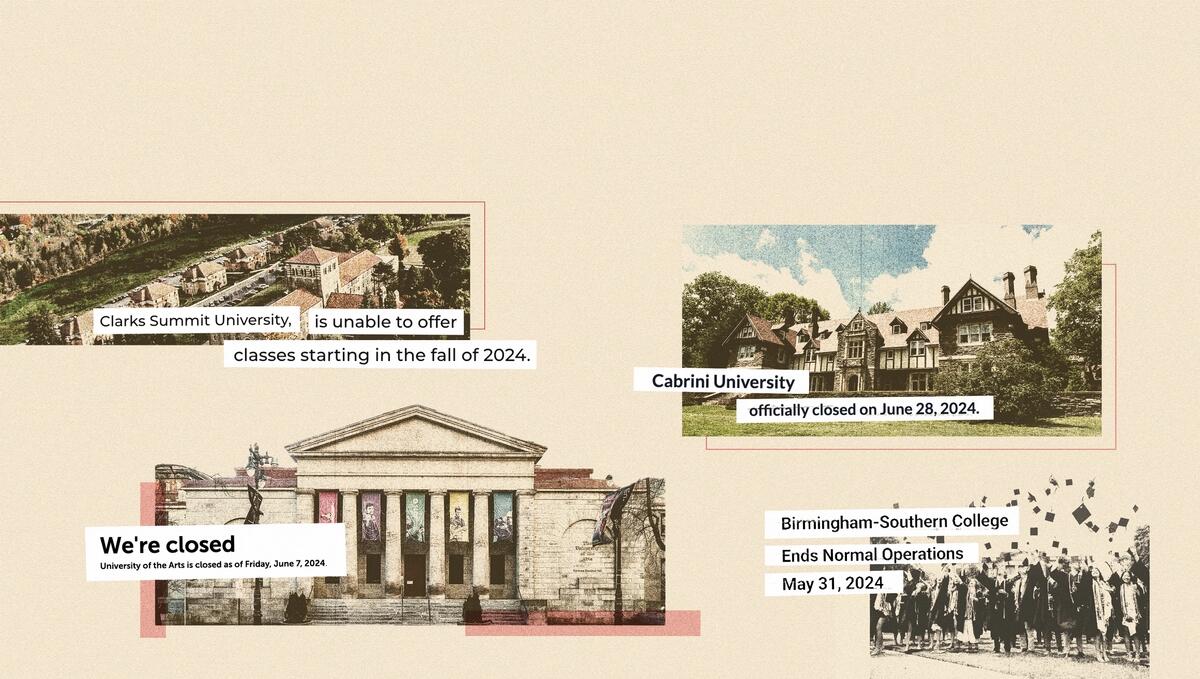Authored by Aaron Gifford via The Epoch Times (emphasis ours),
Abbey Ballentine, a student from Ohio’s Cleveland area, selected nearby Notre Dame College because it had everything she was looking for. It was a small, friendly campus with competitive Division II soccer and it was close to home.

By late fall of 2023, just a few months into her freshman year, she heard rumors the school had financial problems.
The official closure announcement was made early into the spring semester and the college closed its doors in May.
Campus advisors and administrators helped students quickly find other schools within a reasonable distance that would honor their financial aid packages and accept academic credits. Ballentine chose Thiel College in western Pennsylvania.
She’s still warming up to her new environment. The soccer team is Division III, a lower level than her prior team but also an opportunity for more playing time. The campus is more spread out and further from home. The move also pushed Ballentine out of her comfort zone and challenged her to switch majors from nursing to exercise science, which she has enjoyed.
“I think it’s a good match for me, and I actually like being further away from home, so far,” Ballentine told The Epoch Times. “But it’s only been a month, and I kind of still miss everything about Notre Dame.”
The support provided to Notre Dame College students in such a short window is rare, according to Rachel Burns, senior policy analyst with the State Higher Education Executive Officers Association (SHEEO), a research and policy organization.
Burns said 70 percent of private college students who attended institutions that closed abruptly in the past five years received no help in finding a place to continue their academic career.
Of the 500,000 students displaced by closures, less than half re-enrolled elsewhere, she said.

And by this time next year, U.S. high school students could be looking at even fewer college choices.
Leaders at many higher learning institutions may determine their school’s fate in a matter of weeks after all federal financial aid checks for students attending this academic year are accounted for, says Gary Stocker of College Viability, a data analytics company that specializes in higher education finances.
“Many of them will decide, ‘I’m not sure we can survive past May,’” Stocker told the Epoch Times. “There’s a trend in short notice closures.”
Ninety-nine degree-granting institutions closed in the past year, according to the National Center for Education Statistics. That includes community colleges, four-year schools, and universities. Seventeen of the schools were four-year nonprofit private schools, some of which had operated for more than a century before encountering severe financial problems in recent years.
Particularly impacted are small, private residential liberal arts colleges, where a typical student is in their late teens or early 20s and attends full-time and in-person.
Stocker said he expects that at least another 99 schools will announce their closures in the coming months. He estimates there are more than 2 million unfilled student slots across U.S. colleges and universities.
“It’s not even close to equilibrium,” Stocker said.
He said many factors are playing a role in shrinking enrollment numbers at traditional higher learning institutions, including the steep cost of tuition, job market trends, a recent Supreme Court decision, and even a sustained period of decreased birthrates across the country.
Factors such as last year’s delayed Free Application for Federal Student Aid (FAFSA) rollout add to an already stressed market. Prospective students fill out a FAFSA form to find out their eligibility for financial aid, including grants, work-study programs, and loans. It can determine whether they can afford to attend college or not.
Drop in Students
U.S. college and university enrollment decreased by 1 million students over the past decade, according to data from the National Student Clearinghouse Research Center.
A slight increase in students enrolled in higher education classes between 2022 and 2023, mainly due to the spike in online course offerings and high schools that allow students to complete college-level credits, according to the National Center for Education Statistics.
Stocker called college closures a regional problem that has so far disproportionately affected campuses in the northeast, but it’s approaching the tipping point as a national epidemic.
The flurry of closures in New York could be a sign of things to come, he said.
Kieran Weinstein enrolled at the College of St. Rose in Albany, New York, in the fall of 2022. He was recruited to play on its Division II soccer team.
A year later, the school announced its final class would graduate in May 2024.
The sophomore from New Paltz, New York, decided to transfer out as soon as possible because he found the school environment to be depressing, and a number of courses in which he was interested had already been cut.
Continue Reading: zerohedge.com





Leave a Reply